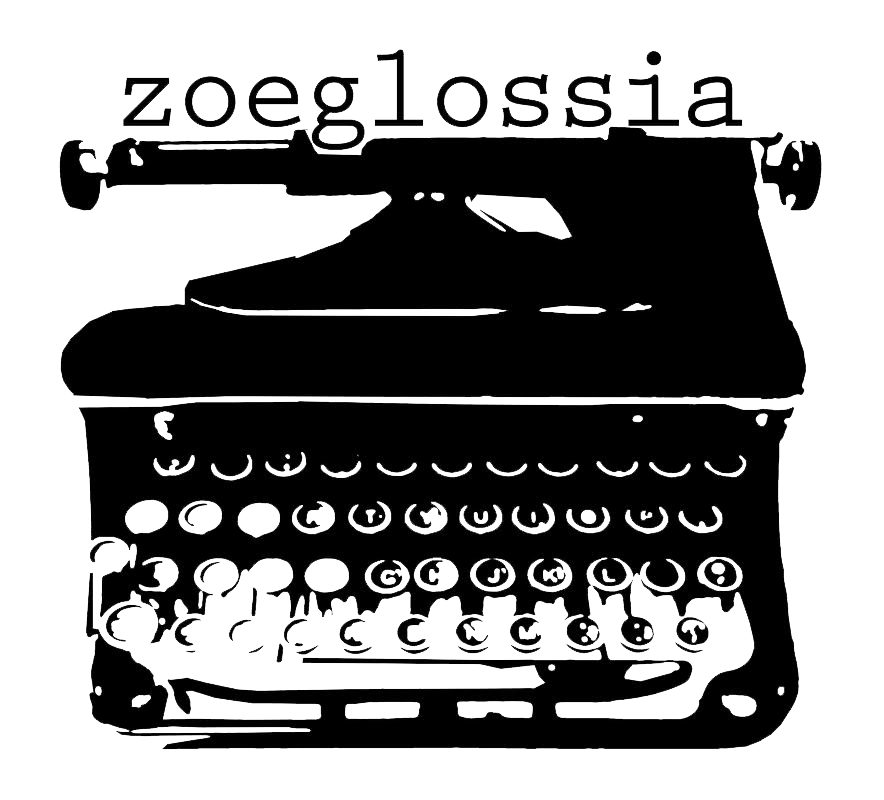October 2023
Zoeglossia Poem of the Week Series: Flows of Disability: Some Tails Of Crip Survival
Curated by Jessica Suzanne Stokes
In 1978, Bette Midler took to the stage wearing a blue mermaid tail in the persona of Delores De Lago. This mermaid persona opened new worlds for Midler as a performer and offered wild potential for her stages. Adorned with sequins and simulated coral, Midler performed disco hits such as Gloria Gaynor’s “I Will Survive” using electric wheelchairs for choreography. This image might be written off as a visual joke playing with the phrase, “a fish out of water” or as yet another joke at the expense of disabled people. But a mermaid isn’t a fish. She’s sexy and dangerous. She has her own kind of limb difference. She reminds people of the environment's role in the production of disability. She’s been a potent image for disabled people such as TikToker Helena the Mermaid and singer Antonietta Laterza. And the image hasn’t gone away. It has been adapted in Lady Gaga’s “Yuyi” and as a runway challenge in RuPaul's Drag Race. Some disabled people have decried it as an act of cripping up–using disability as a costume–while others have found joy in wheelchairs’ mobility being celebrated (at least in Midler’s performance).
When searching the internet for disabled mermaids, another aquatic image of disability is Sue Austin’s adapted SCUBA-chair. Austin moves through a coral reef in her chair, bubbling past fish and sailing over coral as the currents wave her hair behind her. In a TEDX talk where she discusses her use of a wheelchair, she recalls “when I started using the wheelchair, it was a tremendous new freedom… It was like having an enormous new toy. I could whizz around and feel the wind in my face again.” The move from air to sea is a celebration of mobility and the possibility that water and technology could open for her. She recalls the dissonance that she felt as her world was opened by a wheelchair while those around her described its presence in her life as foreclosing possibilities.
Taking the power chair to the water was, once again, a reversal of the imagined boundaries and perceived places of various forms of mobility. Water can be a holding space for the imagination as it offers images of other ways of moving and being. The Salamander Project took up this space for art making: “Since May 2013, disabled people and their allies from around the world have climbed into pools and oceans with us, and we float together, enjoying complicated freedom, companionship and adventure. And we give ourselves to the pressures the waters exert on us.” Water’s buoyant interaction with folds of skin transforms self-image and offers relief to some joints as it alters everyday pressures. The movement and relief that water offers is described as complicated freedom, that complication grows as other disabled writers look to water and its pollutants as crip companions in a time of climate crisis. Sunaura Taylor’s work on Disabled Ecologies, which she describes as "the webs of disability that are created spatially, temporally, and across species boundaries when ecosystems are contaminated, depleted, and profoundly altered,” encourage us to consider what it means to discuss the environment as disabled. Taylor tasks us to reexamine discourses that present ecosystems and waterways as sick or disabled–what happens if we don’t just consider this disability as metaphor, don’t just call it not ableism, but instead use this labeling as a way to attend to water and land as disability kin in a framework of disability justice.
The poems gathered for Zoeglossia in October’s Poem-of-the Week collection bring together disability, water, and the more-than-human world as a way to critically reflect on the intricate relationship between disability and water. In Johnson Cheu’s (Oct. 1) “Disabled Child at the Community Pool,” the sestina form moves the reader through when, egg, womb, toes, whole, then… It is a beginning, a return to the fluids that support formation and creation and the eggs that nourish a crip time that is in process of becoming. It is a when, a then, an unresolved insistence on the materiality of disabled experience “the child is here, a who is, not an if, then…” Johnson Cheu is a poet and assistant professor in the department of writing, rhetoric, and American cultures at Michigan State University. Stephanie Heit’s (Oct. 8) “underwater plot to get the raft back” moves out of the human-structured pool and into a lake to question where the human touches on the interface of muskrat, red-winged blackbird, sand, and wood. The sparsity of words evokes a language focused on color and motion between species. The poem waits with bated breath for more entities to enter into the negotiation of water/wood/wind. Stephanie Heit is a queer disabled poet, dancer, teacher, and codirector of Turtle Disco, a somatic writing space on Anishinaabe land in Ypsilanti, Michigan. In “Ode to Plastic Cups” Naomi Ortiz (Oct. 15) questions what kinship disabled people might have with not water but the beautiful, springy plastic that pollutes it, asking “Where is my place in zero waste?” This ode elucidates the inaccessibility of shattering coffee cups, weighty tumblers, and glasses as it moves from “can’t to good enough” in the form of ever-waiting, always patient, never decomposing plastic cups. Naomi Ortiz explores cultivating care and connection within states of stress through their poetry, writing, facilitation, and visual art.
These poems take to the water as they consider what it means to sing “I will survive” in complex, interdependent relationships.
